UConn, Louisville, NC State up in Way-Too-Early Preseason Top 25
Now that the transfer portal has emptied and the coaching carousel has stopped, it’s time to take another look at the Way-Too-Early Preseason Top 25.
More might change before the 2019-20 season opens in two months. Eligibility has yet to be determined for a number of transfers, and whether the likes of Evina Westbrook (UConn) and Elizabeth Balogun (Louisville) are allowed to play right away will go a long way toward determining the march to the Final Four. Notre Dame’s national championship roster of two years ago wasn’t solidified until the day before the season, when Jessica Shephard was ruled eligible. Could the NCAA’s decision on Westbrook hold the same key for the Huskies?
Some things won’t change before the season starts the first week of November. The Pac-12 looked like the best conference back in April, and it continues to lead the way. Oregon and defending NCAA champion Baylor remain the favorites to reach the title game in New Orleans. The rest of these teams will have the best chance to catch the Ducks and Lady Bears. (Previous ranking refers to our April 22 rankings.)

1. Oregon Ducks
Previous: 1
After a summer of 3-on-3 and a gold medal at the Pan Am Games, Sabrina Ionescu and Ruthy Hebard are ready to get back to the real thing, with a national championship in sight. Ionescu’s decision to return to Eugene for her senior season and forgo the WNBA for another year put the Ducks, who reached their first Final Four in April, atop this list. The Wade Trophy and Wooden Award winner could become the first player in NCAA history to amass 2,000 points, 1,000 assists and 1,000 rebounds in a career. Hebard is also a potential All-American in the post, and junior Satou Sabally might be the best No. 3 scoring option in the country. Sabally’s sister, 6-foot-5 redshirt freshman Nyara, recently suffered a second ACL injury, which will leave Kelly Graves with limited frontcourt depth if 6-foot-7 Texas transfer Sedona Prince isn’t granted immediate eligibility.

2. Baylor Lady Bears
Previous: 2
The Lady Bears’ offseason has brought almost as much good news as last spring’s NCAA title run. Do-everything forward Lauren Cox is nearly back at 100 percent after suffering a knee injury in the championship game win over Notre Dame, and she is expected to be ready for a run at a repeat as well as every major player of the year award. In July, Te’a Cooper elected to join Baylor as a graduate transfer from South Carolina. That means coach Kim Mulkey will turn point guard duties over to a former all-SEC performer for the second consecutive season (we all know how well that worked out for Chloe Jackson, who became the final piece to the national championship puzzle a year ago after leaving LSU). After a big NCAA tournament, junior Didi Richards should be ready to take on a more important role, and 6-foot-2 sophomore NaLyssa Smith, 6-foot sophomore Aquira DeCosta and 6-foot-3 sophomore Queen Egbo give Baylor the kind of talent and size that will be unmatched in the Big 12 as the squad aims for a 10th consecutive conference championship.

3. UConn Huskies
Previous: 7
The most important part of the Huskies’ season could come before it starts. The NCAA has yet to rule on the immediate eligibility of Tennessee transfer Evina Westbrook. UConn was initially confident that the Lady Vols’ co-leading scorer from last season would be allowed to play right away, but a recent tightening of the transfer rules by the NCAA has made that decision less clear. If Westbrook, who had knee surgery in June, gets to play, she will join senior Crystal Dangerfield, who is recovering from hip surgery, and Christyn Williams to form perhaps the best backcourt in the country when healthy. The addition of Murray State transfer and London native Evelyn Adebayo should soften the blow of the graduation of Napheesa Collier. Megan Walker taking the next step as a scorer and Olivia Nelson-Ododa as a defensive force will also be keys to the Huskies’ reaching a 12th straight Final Four.

4. Stanford Cardinal
Previous: 3
With four returning starters and the nation’s second-rated recruiting class, this might be the deepest team Stanford has ever had. Coach Tara VanDerveer will likely experiment with the best way to use Haley Jones, the top recruit in the country, according to HoopGurlz. The versatile 6-foot-1 wing could slide into a backcourt that features returning starters Kiana Williams and DiJonai Carrington, as well as sophomores Lacie Hull and Lexie Hull. If Nadia Fingall isn’t fully recovered from a knee injury early in the season, Jones could play more forward alongside Maya Dodson. VanDerveer hopes that freshman Fran Belibi, known mostly for her dunking prowess to this point, can develop a skill set similar to that of the Ogwumike sisters. Freshman Hannah Jump might one day be the Cardinal point guard, and she could be an important 3-point threat this season. Ashten Prechtel also is expected to contribute right away.
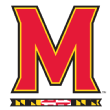
5. Maryland Terrapins
Previous: 4
The Terrapins return 90% of their scoring and welcome two top-20 recruits. They are the runaway favorites to win the Big Ten, but breaking the trend of three second-round NCAA tournament losses in four years should be the bigger goal. Senior guard Kaila Charles will again be Brenda Frese’s go-to scorer and is a first-team All-America candidate. Taylor Mikesell, a dangerous 3-point shooter, and 6-foot-5 Shakira Austin, an intimidating defensive and rebounding presence, were one the best freshmen duos in the country a year ago and should be even better, especially if Austin’s low-post offensive game develops. Senior guard Blair Watson and senior forward Stephanie Jones are lineup mainstays but could be pushed by 6-foot-1 freshman guard Diamond Miller and Tennessee transfer Mimi Collins, a 6-foot-3 forward, if she is granted immediate eligibility. Another freshman, 5-foot-11 Ashley Owusu, could start at the point.

6. Oregon State Beavers
Previous: 6
The Beavers join Oregon and Stanford in a loaded top of the Pac-12. If Scott Rueck can incorporate the size he has brought to Corvallis to go with a veteran group in the backcourt, Oregon State could challenge for conference supremacy. Freshmen forwards Kennedy Brown (6-foot-6) and Taylor Jones (6-foot-4) were both high school All-Americans last year, and 6-foot-9 Andrea Aquino was the top recruit in program history two years ago. The foundation rests in veteran guards Mikayla Pivec and Destiny Slocum, both of whom were all-conference selections last season, and Aleah Goodman. Losing sharp-shooter Kat Tudor in January to a knee injury was a big blow for the Beavers, but she is back for her senior year.
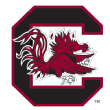
7. South Carolina Gamecocks
Previous: 9
The loss of seven players from last year’s Sweet 16 team, including three transfers, is eased by the arrival of the top recruiting class in the country and, by most accounts, one of the best in the sport in years. Mikiah Herbert Harrigan’s decision to stay in Columbia for her senior year after entering the transfer portal is also a big boost. Along with guards Tyasha Harris and Destani Henderson, she gives Dawn Staley a veteran foundation. However, if the Gamecocks are to win an SEC title and compete for a Final Four spot, that freshmen class — headed by top-10 recruits 6-foot-5 post Aliyah Boston, point guard Zia Cooke and forward Laeticia Amihere — will have to contribute immediately.
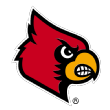
8. Louisville Cardinals
Previous: 14
The Cardinals’ spot as a top-10 team and a favorite to win the ACC hinges on Georgia Tech transfers Elizabeth Balogun and Elizabeth Dixon being granted waivers to play immediately. Louisville filed the paperwork to the NCAA less than two weeks ago. Balogun was the Yellow Jackets’ leading scorer (14.6 PPG) and the ACC Rookie of the Year. The 6-foot-5 Dixon averaged 11.0 PPG. They each left Georgia Tech following the firing of coach MaChelle Joseph after player allegations of verbal and mental abuse. Balogun and Dixon would join a core of Jazmine Jones, Kylee Shook, Bionca Dunham, Dana Evans and Yacine Diop, all of whom hope to make up for the loss of Asia Durr, the program’s second all-time leading scorer.
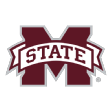
9. Mississippi State Bulldogs
Previous: 8
A busy summer for coach Vic Schaefer — who led Mississippi State to a silver medal at the World University Games and served as an assistant for Team USA at the Pan Am Games — concluded with some even better news when guard Jordan Danberry was granted another year of eligibility. Danberry, the Bulldogs’ third-leading scorer last season, can now anchor a backcourt that includes solid shooters Bre’Amber Scott and Andra Espinoza-Hunter and the hopeful healthy return of Chloe Bibby, an even bigger long-range threat. Promise Taylor, a 6-foot-5 Ole Miss transfer, and 6-foot-5 sophomore Jessika Carter will try to replace the production of Teaira McCowan in the middle.
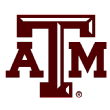
10. Texas A&M Aggies
Previous: 5
Chennedy Carter has the ability to shoot the Aggies into almost any game, as evidenced in the NCAA tournament against Marquette and almost in the Sweet 16 against Notre Dame. Carter, the second-leading returning scorer in the country (23.3 PPG), is probably the best one-on-one player in the game. She won’t have to do it alone, however. The Aggies bring back fellow juniors Kayla Wells, Aaliyah Wilson (back from injury), Ciera Johnson and N’dea Jones to compete for a title in the most wide-open SEC in years.

11. Florida State Seminoles
Previous: 11
The Seminoles might be getting older and healthier at the right time, as recent ACC powers Notre Dame and Louisville presumably are taking a step back. Nicki Ekhomu, Kiah Gillespie and Nausia Woolfolk, who each averaged double-figure scoring last season as sophomores, remain the building blocks, but a healthy return of 6-foot-2 forward Iho Lopez, who missed all of last season from injuries sustained in a car accident, should give Sue Semrau more lineup flexibility after she had just nine scholarship players last season. Savannah Wilkinson can return to the backcourt, and sophomores Valencia Myers and Morgan Jones can be used more strategically. River Baldwin, a 6-foot-5 freshman center, and 6-foot-1 Sammie Puisis, a pair of McDonald’s All-Americans, should have immediate opportunity.

12. UCLA Bruins
Previous: 16
The core of ultra-athletic Michaela Onyenwere and point guard Japreece Dean is a good place to start for Bruins coach Cori Close. Improvement from the 3-point line (30.6% accuracy in 2018-19) is imperative if UCLA is to challenge for a top-three finish in the Pac-12. The healthy return of Chantel Horvat and the eligibility of Baylor transfer Natalie Chou should help in that department. Close brought in a top-10 recruiting class, highlighted by point guard Jaden Owens, who could allow Dean to play off the ball at times and be even more of a scoring threat.
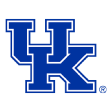
13. Kentucky Wildcats
Previous: 12
Matthew Mitchell will be able to build his team around versatile Rhyne Howard, last season’s espnW national freshman of the year. She has first-team All-American talent and will be the undisputed No. 1 option with the graduation of Maci Morris and Taylor Murray. Arizona State transfer Sabrina Haines, a 5-foot-10 guard, will be eligible right away, and 5-foot-5 Texas transfer Chasity Patterson, the top-rated high school point guard two years ago, can play at midseason, giving the Wildcats needed balance. How much Kentucky is able to compete at the top of the SEC might depend on the improvement of forwards KeKe McKinney and Tatyana Wyatt.

14. Texas Longhorns
Previous: 15
The torn ACL suffered by Lashann Higgs last November scarred what looked like a promising season in Austin. Her return after being granted a medical redshirt is a huge boost for a team that has talent but is loaded with questions. Higgs and All-Big 12 point guard Sug Sutton make up a productive backcourt, but other players on the roster must live up to expectations if the Longhorns are to challenge Baylor. Joyner Holmes has one more season to be the player she showed she could be as a freshman. Charli Collier and Audrey Warren came to Austin a year ago highly regarded but were merely role players.

15. NC State Wolfpack
Previous: 25
The Wolfpack overcame myriad major injuries to have one of the most successful seasons in program history. If health can be restored, NC State should again be in the mix near the top of the ACC. Point guard Kaila Ealey missed all of last season after a knee injury in October 2018. If she can return to form, senior Aislinn Konig can return to playing off the ball, where her 3-point shooting will be more of a threat. Getting guard Grace Hunter, who was the team’s leading scorer before a season-ending knee injury in January, back to 100 percent will give coach Wes Moore a versatile backcourt to put around budding star Elissa Cunane in the middle. The 6-foot-5 sophomore could be one of the best post players in the country.
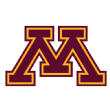
16. Minnesota Golden Gophers
Previous: 18
Lindsay Whalen’s first season as head coach at her alma mater was a bit of a roller coaster, but she was able to turn a 2-7 Big Ten start into a 9-9 finish and a trip to the second round of the WNIT. Despite the loss of top scorer Kenisha Bell, the Gophers should be better this season. Destiny Pitts, Taiye Bello and Jasmine Brunson are back. The final piece to a return to the NCAA tournament will be the health of Gadiva Hubbard, a guard who averaged 13.6 PPG in 2017-18 but missed all of last season with a foot injury.

17. Arizona State Sun Devils
Previous: 19
Player development and balance have been hallmarks of the Sun Devils program under Charli Turner Thorne, and after losing four of her top five scorers from last season’s Sweet 16 team, those attributes will have to be on full display to challenge for a top-four finish in the best conference in the country. Returning senior guards Robbi Ryan and Reili Richardson will be the cornerstones, and more production from senior Jamie Ruden will be needed.

18. DePaul Blue Demons
Previous: 20
Despite some heavy graduation losses, the Blue Demons should be the favorites in the Big East next season. With a core group of Chante Stonewall, Kelly Campbell and Lexi Held, DePaul will still play fast, space the floor and shoot plenty of 3-pointers, a stat the Blue Demons led the nation in a year ago (1,121 attempts). Look for sophomores Maya Stovall and Sonya Morris, both of whom are St. Louis natives, to play bigger roles.

19. Arkansas Razorbacks
Previous: 22
Momentum is the big word around the Razorbacks after they finished the season so impressively with a run to the SEC tournament title game and a third-round WNIT appearance. Junior Chelsea Dungee (20.5 PPG last season) will be one of the top scorers in the SEC, and third-year coach Mike Neighbors has five of his next six top scorers from last season back. Guard Amber Ramirez, a former McDonald’s All American, is eligible after her transfer from TCU and could be the perfect running mate for Dungee.

20. Notre Dame Fighting Irish
Previous: 17
A new era has arrived in South Bend with the loss of five starters to the WNBA and top assistant coach Niele Ivey to the Memphis Grizzlies. Not many programs can survive all that change at once — but those programs don’t have a Hall of Fame coach in Muffet McGraw. Expecting another Final Four appearance or ACC title would be a bit much, but McGraw should be able to blend returnees Mikayla Vaughn, Abby Prohaska, Katlyn Gilbert and Danielle Cosgrove with transfers Destinee Walker (North Carolina) and Marta Sniezek (Stanford). Highly acclaimed freshmen Sam Brunelle and Anaya Peoples also join a winning group that should be right back in the NCAA tournament.

21. Indiana Hoosiers
Previous: NR
Coach Teri Moren has engineered a steady climb in Bloomington after a WNIT title two years ago and a second-round NCAA tournament appearance last season. Now the Hoosiers are in position for even bigger results. The top four scorers return, led by junior guards Jaelynn Penn and Ali Patberg, who was granted a sixth year of eligibility. A top-three finish in the Big Ten is in play.

22. Miami Hurricanes
Previous: NR
The return of 6-foot-4 senior Beatrice Mompremier gives coach Katie Meier a centerpiece around which to build. Mompremier recorded double-doubles in 20 of her past 24 games and should be a force in the ACC. Mykea Gray should take over the point guard duties full-time. Junior Kelsey Marshall, who led the Hurricanes in 3-point attempts and makes last season, could be that reliable third scorer.
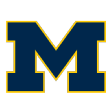
23. Michigan Wolverines
Previous: 21
The Wolverines were one of the best teams in the Big Ten by the end of 2018-19. Sophomore Naz Hillmon, last season’s leading scorer and rebounder, and sophomore Amy Dilk, who led the Wolverines in assists, are both back. Another jump by 6-foot-1 junior Hailey Brown would give coach Kim Barnes Arico a big boost.

24. Rice Owls
Previous: NR
The Owls are in position to dominate Conference USA again with the return of 6-foot-7 Nancy Mulkey, the league tournament MVP, and guard Erica Ogwumike, the C-USA Player of the Year.

25. Michigan State Spartans
Previous: 13
The Spartans likely won’t challenge for a Big Ten title after the graduation of heart-and-soul Jenna Allen and the transfer of Sidney Cooks to Mississippi State. But the backcourt — Shay Colley, the team’s leading scorer last season (14.1 PPG), Taryn McCutcheon and Nia Clouden — is back. Coach Suzy Merchant also brought in a top-10 recruiting class and should have plenty of depth with which to work.
Also considered (previous ranking, if applicable): Syracuse (10), Auburn, Clemson, Rutgers, Tennessee (24), LSU